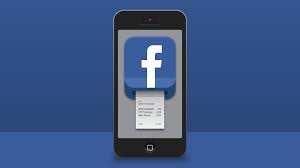
Facebook is major force in social media
Facebook has managed to stay relevant despite predictions that its demise would come about as soon as the public moved on to the ‘next big thing’ in social media. Aside from Twitter’s quick rise and the recent buzz around new social network Ello, Facebook has managed to keep 1.32 billion monthly active users and shows no sign of disappearing. In the drive to stay current, Facebook famously bought messaging app Whatsapp for $19bn in February 2014 and is now anticipated to move towards a future of peer-to-peer payments through its messaging app. Will Facebook be successful in establishing a presence in payments and in what form can users expect the scheme to be rolled out over the coming year?
Payments could be rolled out within a few months
When the news surfaced that PayPal President David Marcus had been hired by Facebook to take the lead in developing Facebook Messenger, many suspected that the inclusion of payments would be on the horizon. Revealed screenshots of the Messenger iPhone app have indicated that in the future, users will indeed be able to send money in the same way that they can currently send photos, videos or articles. Andrew Aude of Stanford University shared screenshots of the app on Twitter on 4 October 2014 and has stated that he believes the feature might be rolled out in the next few months (goo.gl/qnHt2Z).
Can Facebook use its large user base to be successful in payments?
In discussions of why Apple Pay is expected to be successful in mobile payments, previous Penser analysis has pointed to the fact that Apple already has over 800 million iTunes account holders who can seamlessly begin to make one-touch payments. In comparison, Facebook stands to be successful in a similar way in that it is a trusted site for millions of connections between friends, family and colleagues. However, where Facebook differs from Apple is that users have yet to upload their card details. Therefore, the challenge for Facebook lies in ensuring that it can offer a safe environment for payments. The social network will need to offer users simplicity and security before they will be enthusiastic about using the site for person to person (P2P) transfers. Facebook’s journey into payments comes at a time where WeChat and Kakao have already gained traction in social messaging based payments. In August 2014, WeChat announced that it had 438 million monthly active users and in September introduced in-store payments for nine retail chains across China.
The impact on emerging markets
Overall, the potential for Facebook to be a crucial mechanism for transferring money around the world is heightened in emerging markets. According to Tech2 analysis, the impact of Facebook P2P payments will be greater in countries where there is limited access to ‘banks, ATMs and money transfer agencies’ (goo.gl/bLrcv6). Kevin Walsh, forecasting director at GfK has stated, “Our forecasts show seven new entries in the top 10 smartphone markets for 2015, in terms of growth by value – and these are all emerging markets, which have overtaken developed markets where smartphone saturation is nearing completion.” (goo.gl/sUoQE0) In these markets, the growth of the use of smartphones offers opportunities for companies like Facebook to seize the opportunity to fill the gap in financial services and become the main way in which users pay for services and transfer money.
Where are we heading with P2P transfers?
As Facebook made 92% of its revenue in the last quarter from ads, P2P transfers could allow Facebook to boost sales on top of this traditional source of income. (goo.gl/STlMGh). With Twitter aiming to integrate a ‘buy’ button soon, we expect that paying friends via Facebook is less than 12 months away.

